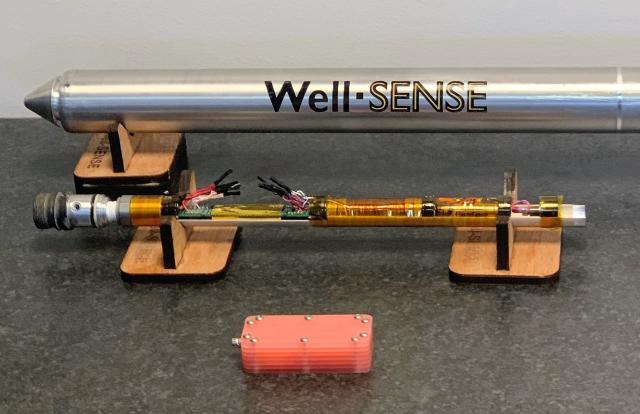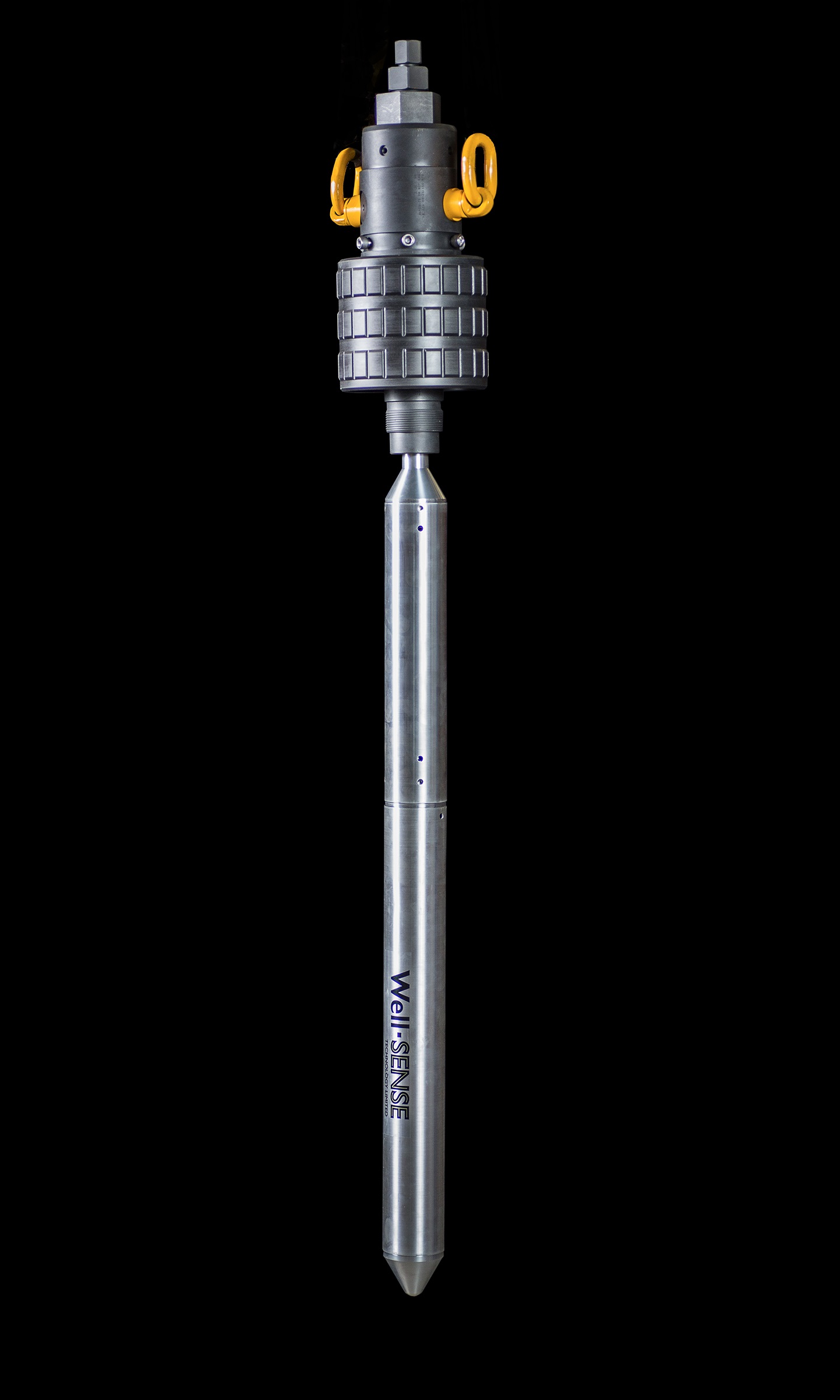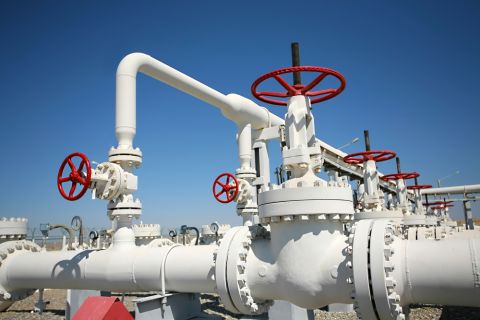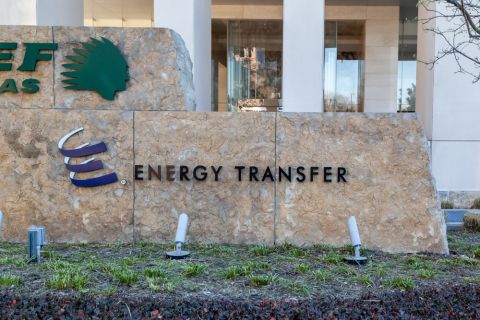
Active-FLI sensors are shown in this probe setup, alongside the company’s small data recorder. (Source: Well-SENSE)
Today’s oil and gas operators are using data like never before. Valuable insights from well surveillance can inform important decision-making, underpin future operational plans and significantly improve efficiency. Data can be gathered to inform activities across the complete life cycle of the well, such as cement assurance during drilling and well completion, production optimization, well integrity investigation and remediation, and planning or verifying plug-and-abandonment (P&A) operations.
Traditionally, well data have been gathered using wireline logging, coiled tubing, intelligent completions or, more recently, fiber-optic sensing. Until now, fiber optics have usually been embedded within an intelligent completion or integrated within an intervention conveyance medium, such as carbon rods, to provide protection for the deployment and retrieval of the fiber into the well.
All these methods are inherently costly to the operator, both through deployment, installation and operational logistics and also lost production during lengthy intervention downtime. They are also not without risk, with multiple vendors, personnel and large-scale equipment required on site.
One system, one box, one run
Based in the U.K. and the U.S., Well-SENSE has released the FiberLine Intervention (FLI) technology to deliver faster, smarter well intelligence. This is a self-contained, portable system using a plug-and-play surface launcher connected to the wellhead. It deploys a small, compact probe into the well, which lays bare optical fiber down to total depth. The fiber gathers instant, distributed data simultaneously from every location. Temperature and acoustic profiles can be captured, plus any changes over time, resulting in a rich picture of the entire well.
With the recent addition of a package of single-point sensors within the probe, the new Active-FLI system now offers operators the first and only well surveillance system that combines distributed fiber sensing with singlepoint electronic and optical gauge sensing. Active-FLI has been developed, tested and deployed commercially with success, proving the system’s reliability, data accuracy and quality in the field. The range of well data available to operators in just one run of the Active-FLI system surpasses that available from any other system.
Deploying only bare fiber and a small degradable probe, FLI is single-use and can either be left in the well to break down over time or retrieved depending on the operator’s preference.
As a plug-and-play system, FLI is ready for rapid implementation. It takes one to two people about an hour to rig up, while rigging down is almost immediate. Compared to onshore data acquisition in the U.S., FLI offers up to 50% to 75% cost savings, whereas this can reach 90% in the offshore environment, depending on the application.
Being compact and portable, FLI is delivered to the well site in the back of a truck or via a small shipping box. This opens up new opportunities, allowing operators to acquire data from more challenging, less accessible wellsite locations, such as unmanned offshore satellite platforms with little or no deck space.

Real-time data, real-time decision-making
FLI provides downhole data to underpin future operational plans and can provide the intelligence needed for real time decision-making. A small surface data recorder gathers data during deployment in real time, and this can be streamed live via the cloud to Well-SENSE analysts. This results in much faster well profiling and decisions can be made by the operator in real time while FLI is in situ.
In some cases, this has led to an extended period of data acquisition to see how the data change in real time and how those data are impacted by other activities. Operators can monitor, for example, the reservoir connectivity by using temperature and flow profiling during gas lift or water injection, even analyzing and comparing the profile of multiple wells at the same time.
First offshore deployments
Well-SENSE has recently completed its first round of offshore FLI projects for a range of international operators. One of these projects included distributed temperature sensing (DTS) surveys for flow profiling on two unmanned gas-lift wells off the coast of Malaysia. During the project, the technology delivered additional well insights, including the optimal temperature of the producing well, the location of water ingress and the flow performance of each gas injection valve. This gave the operator fresh and accurate intelligence to consider new production optimization options for the two wells.
In the North Sea, a series of leak detection surveys was performed on several producing wells, which included a number reaching P&A status. Capturing both DTS and distributed acoustic sensing data allowed the operators to verify well integrity or identify leak points and paths, including in the B and C annulus, and confidently plan necessary remediation work.
Verified cementing operations
Another important application for FLI is cement assurance for well completions. FLI’s bare fiber can be installed within the well after pumping the slurry into the casing annulus. It provides a time-elapsed view of exothermic heating and cooling of the cement behind the sections of casing. It can quickly identify any integrity issues such as fissures and gaps or cement that has not set to optimal strength and can confirm when the setting is complete, reducing wait on cement time.
If the dynamic temperature log of the cement is as expected, and integrity is ensured, the operator can move ahead with further drilling, casing and cementing to deepen the well. If not, remedial action can be taken at an early stage. FLI also can provide the data needed to document cement integrity and ensure national regulatory requirements are met.
When using conventional techniques for this application, the validation process can be problematic. Wireline instruments have a single point of data capture so can only record measurements at the depth of the logging tool at a single point in time. They must be moved up and down the wellbore to fully identify developing or changing features in the cement during setting. Multiple, more time-consuming and complex logs must be performed, but such methods can still miss valuable data from the changeable heating and cooling phases.
In a recent project with a supermajor in South Texas, FLI was successfully deployed to evaluate the cement curing process using DTS monitoring in the top section of the well. Given the success of this project, the operator decided to leave the system in place to examine FLI’s long-term monitoring capability. Continuous distributed temperature data were then recorded for 35 days, at which point the operator decided to remove FLI, being satisfied with its capability. During this period, the deployed fiber showed no change in sensitivity or optical quality, even recording temperature fluctuations as a result of nearby drilling activity.
Recommended Reading
Ozark Gas Transmission’s Pipeline Supply Access Project in Service
2024-04-18 - Black Bear Transmission’s subsidiary Ozark Gas Transmission placed its supply access project in service on April 8, providing increased gas supply reliability for Ozark shippers.
Kinder Morgan Sees Need for Another Permian NatGas Pipeline
2024-04-18 - Negative prices, tight capacity and upcoming demand are driving natural gas leaders at Kinder Morgan to think about more takeaway capacity.
Scathing Court Ruling Hits Energy Transfer’s Louisiana Legal Disputes
2024-04-17 - A recent Energy Transfer filing with FERC may signal a change in strategy, an analyst says.
Balticconnector Gas Pipeline Will be in Commercial Use Again April 22, Gasgrid Says
2024-04-17 - The Balticconnector subsea gas link between Estonia and Finland was damaged in October along with three telecoms cables.
Targa Resources Ups Quarterly Dividend by 50% YoY
2024-04-12 - Targa Resource’s board of directors increased the first-quarter 2024 dividend by 50% compared to the same quarter a year ago.




